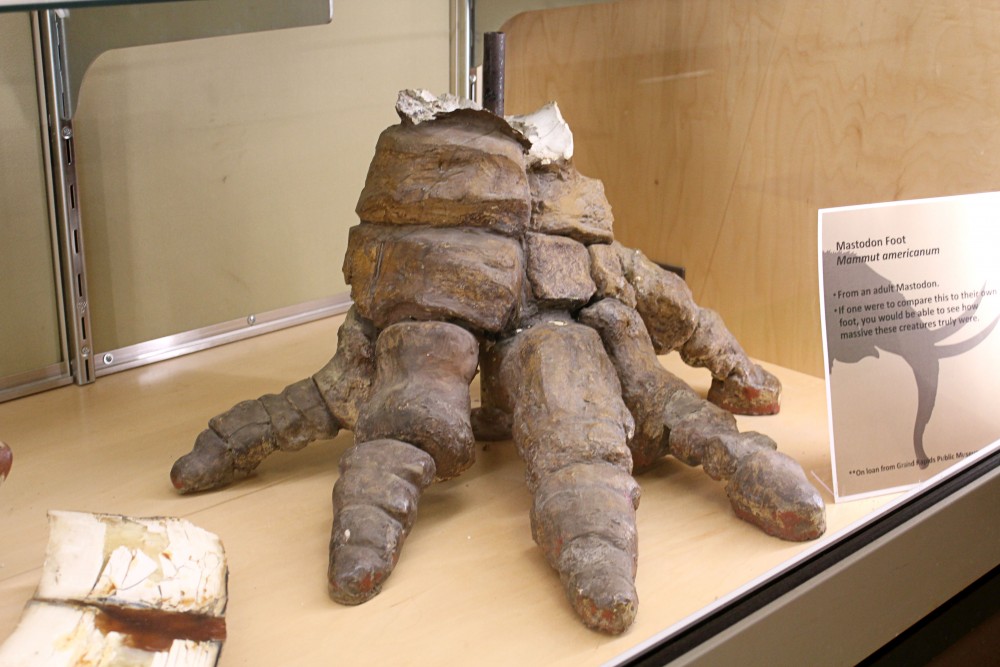Geology Department hosts mastodon, mammoth fossils

Dan pacheco/GVL Mastedon bones 4-12-19
Apr 15, 2019
After extensive preparation, Grand Valley State University’s Geology Department is now showcasing its highly anticipated new fossil display in the Padnos Hall of Science on the Allendale campus. This display consists of different mastodon and mammoth fossils that have been loaned to GVSU for a year, with the option to renew the loan if desired.
The fossils are prominently displayed in the building, and can even taken out of the display case with the intent of bringing them into classrooms to enhance the education of students.
At the beginning of last semester, professor John VanRegenmorter discovered the collection of these fossils at the Grand Rapids Public Museum. It started out being a completely unrelated project, turning into something bigger and better for the university.
“The opportunity to have this collection on loan created profitable relationship building with the GRPM and GVSU’s Geology Department,” VanRegenmorter said.
This display was originally supposed to arrive on campus before the Polar Vortex, but the weather caused complications with delivery and arrival. They officially arrived on February 12, even though the loan had started back in January.
“It is iconic to have them here, as they are a symbol of the Ice Age that happened in Michigan,” VanRegenmorter said.
The fossil of the mastodon was named Michigan’s state fossil in April 2002, moving the Petoskey stone to state stone, instead of state fossil. These fossils are a symbol of the Ice Age in Michigan. With this display being accessible on campus, students can view the fossils and access information about them by reading the plaques.
VanRegenmorter expressed that having this collection on loan from the museum, “is an amazing opportunity for Grand Valley’s Geology department.” He had long awaited the arrival of these fossils to campus and is excited to share this display with students and staff.
Students Hunter Golat and Jared Winn were also excited for this special arrival. Golat and Winn had VanRegenmorter as their professor for Geology 110 and are equally interested in the study of paleontology, which only made their enthusiasm greater.
“I was very excited when John approached Jared and I to make this display,” Golat said. “I have a great passion for Earth’s history, paleontology and what we can learn from it.”
Not only did these two students take an interest in the fossils, but they were asked to help set up the display, design plaques and put together an informational poster. It was very beneficial to Golat and Winn to be involved in putting this together and making the display into what it is now.
Hunter said that he and Jared had a driving idea to distinguish the mammoths and mastodons from one another, since many don’t realize that there is a difference between the two.
The fossils are a huge piece of Michigan’s geologic history. The information provided within the case can teach students about the history, as well as paleontology. They can be found next to other display cases in Padnos outside room 130.






















